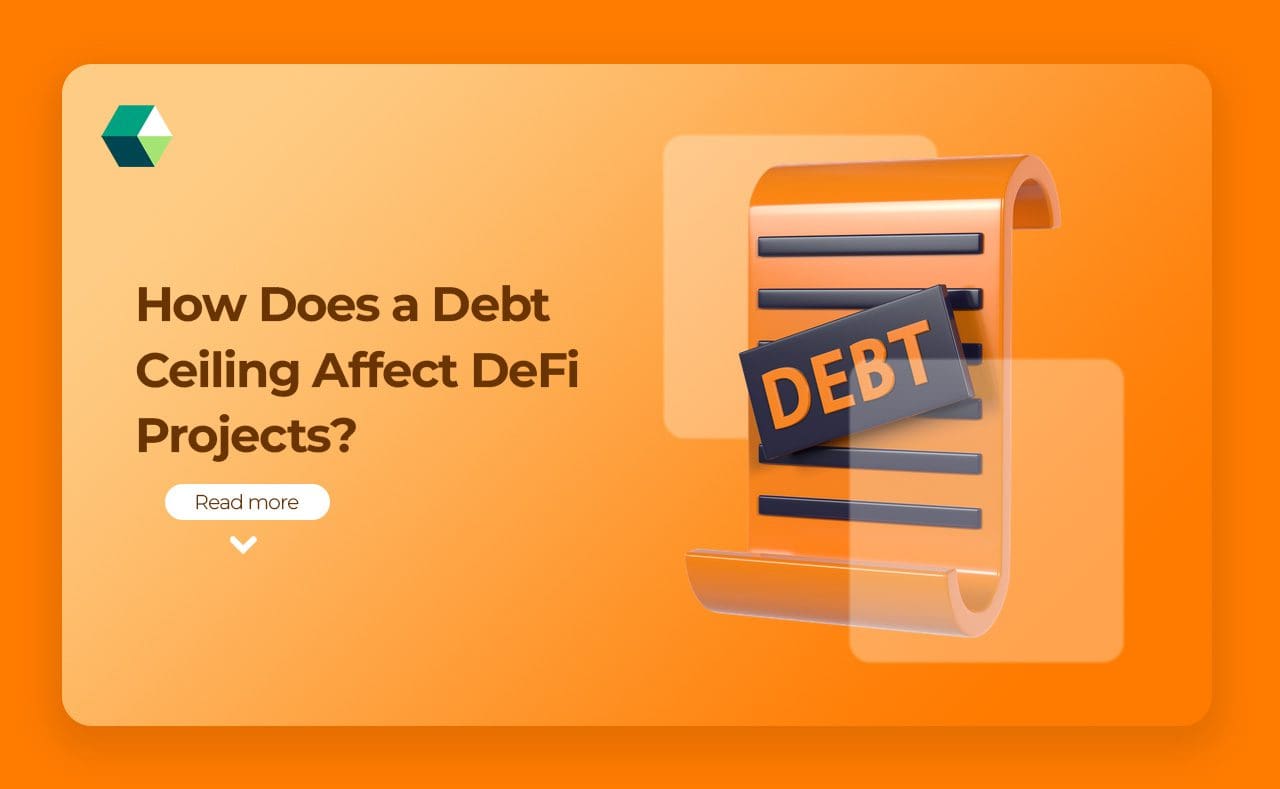
In Decentralized Finance (DeFi), a debt ceiling is a crucial tool that sets a limit on the amount of debt a platform can issue. This limit helps to manage financial risks by preventing excessive borrowing, which can lead to instability or defaults. By controlling debt levels, DeFi platforms ensure they stay within safe financial boundaries, maintain the stability of their markets, and protect the value of their tokens. This approach promotes a healthier and more trustworthy DeFi ecosystem, where users can participate with confidence knowing that financial risks are effectively managed.
What is the Debt Ceiling?
A Debt Ceiling is a cap set by a governing body on the amount of debt that an entity, such as a government or organization, can accumulate. In traditional finance, the debt ceiling is typically applied to the federal budget, limiting how much money the government can borrow. This measure is intended to control spending and prevent excessive debt accumulation that could lead to financial instability.
How Does the Debt Ceiling Affect DeFi Development?
The debt ceiling in Defi Development acts as a limit on how much debt a platform can issue or hold. This helps in managing financial risks by preventing excessive borrowing, which can lead to instability. By setting a cap on debt, DeFi Platforms ensure that they stay within safe borrowing limits, reducing the chance of financial trouble. This approach promotes long-term stability and trust among users, as it keeps the platform’s financial health in check and makes sure it can meet its obligations without risking default.
Impact of Debt Ceiling on Federal Budget
In traditional finance, the debt ceiling directly impacts the Federal Budget. When the debt ceiling is reached or exceeded, the government must make adjustments to its budget, such as reducing expenditures or increasing revenues, to avoid defaulting on its obligations. This can lead to significant changes in government spending and financial policies.
For DeFi Projects, while there is no direct equivalent to a federal budget, the principle remains similar. A debt ceiling helps in managing the platform’s financial operations, ensuring that borrowing and lending activities are kept within safe limits. This can prevent financial crises and ensure the platform remains functional and trustworthy.
Role of Debt Ceilings in DeFi Platforms
Debt ceilings in DeFi Platforms serve several important functions:
-
Controlling Exposure
By capping the amount of debt that can be issued, DeFi platforms can control their exposure to financial risks. This is essential for maintaining stability in a decentralized environment where traditional oversight mechanisms are absent.
-
Maintaining Balance
Debt ceilings help maintain a balance between supply and demand in DeFi markets. They ensure that debt issuance does not exceed the platform’s capacity to handle it, thereby preventing market disruptions.
-
Enhancing Transparency
Implementing a debt ceiling can enhance transparency by clearly defining the maximum amount of debt that a platform can issue. This provides users with a clear understanding of the platform’s financial limits and helps in building trust.
How Debt Ceilings Safeguard DeFi Token Development
Debt ceilings are crucial for safeguarding DeFi Token Development because they limit how much debt can be issued, which helps maintain the stability and value of tokens. By capping debt, DeFi platforms prevent inflation of the token supply and ensure that there is enough collateral to back the tokens issued. This keeps the token’s value stable and reduces the risk of defaults. Essentially, debt ceilings help ensure that DeFi tokens and DeFi Stable Debt remain secure and reliable, promoting healthy growth and building trust with users.
Why Does Nadcab Labs Use Debt Ceilings in DeFi?
Nadcab Labs uses debt ceilings to mitigate financial risks and ensure that its DeFi platforms remain stable and secure. By capping the amount of debt, they reduce the risk of default and financial instability. Implementing debt ceilings helps Nadcab Labs maintain the financial health of its platforms. It ensures that debt levels are manageable and sustainable, supporting long-term success. By using debt ceilings, Nadcab Labs demonstrates a commitment to responsible financial management. This builds trust with users and investors, enhancing the platform’s credibility and attractiveness. Debt ceilings help Nadcab Labs ensure compliance with best practices in financial management. They provide a transparent framework for managing debt, which is crucial for building user confidence and maintaining a reliable platform.





